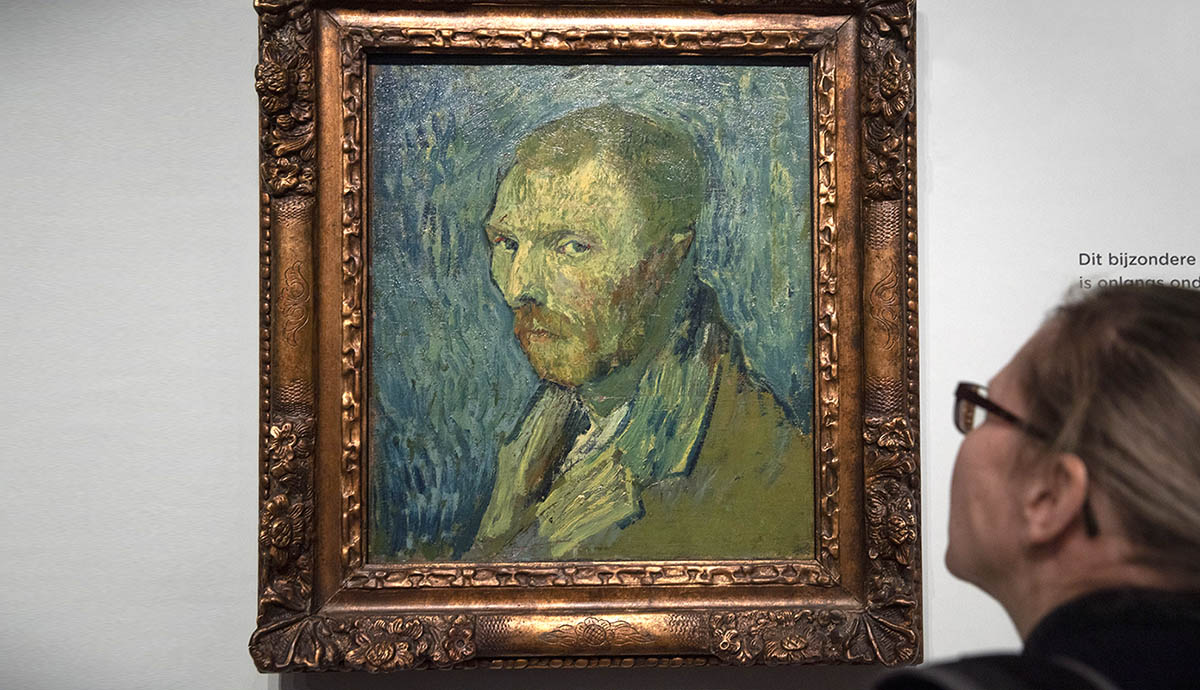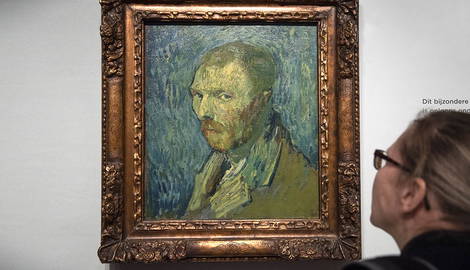
A portrait that was previously only attributed to Van Gogh has been confirmed as authentic by the Van Gogh Museum’s researchers after five years of study and decades of suspicion.
When you think of Van Gogh, it doesn’t take long to remember his famous self-portraits. Sure there was Starry Night and those thought-provoking sunflowers, but there’s something about the artist’s portrayal of himself that has kept viewers intrigued for decades on end.
Perhaps this interest is due to his notorious history of mental health issues. Or perhaps his signature brush strokes make the portraits a welcomed addition to his unique body of work. Whatever the reason, it’s undeniable that Van Gogh’s self-portraits cause our eyes to linger.
35 self-portraits; One from 1889 that always seemed a little off

The painting is owned by Norway’s National Museum and was acquired in 1910, making it the first work by Van Gogh in the world to enter a public collection. But in the 70s, art historians began to question the piece.
To them, it just seemed so unlike the others that were painted around the same time. That is when Van Gogh was in the mental asylum near Saint-Remy-de-Provence.
You can see from the image that Van Gogh painted himself as weak and vulnerable with a disturbed facial expression and hunched shoulders. He’s haggard, only partially turned toward the viewer, avoidant and timid. It’s not much like his other self-portraits of the era.
Van Gogh painted three other self-portraits during his time at Saint-Remy which lasted from 1889 to 1890.
You can see the differences between these three paintings and the newly authenticated one right away


The main difference is that Van Gogh usually painted himself from the left, meaning his mutilated ear was hidden from view. In this self-portrait, his damaged ear is depicted blatantly – so that’s the first and most obvious difference.
To elaborate on the mutilated ear, it’s common knowledge that Van Gogh cut off his own ear eight months before this painting was created. He seems to have scraped off the bottom part of a full ear and took the scraper to the rest of his face to further express his anguish.
However, he’s still facing the same way as the other two self-portraits from the Saint-Remy period which researchers have attributed to using a mirror and further supports the idea that he started with painting a full ear before he scraped half of it off.
But, getting back to the point, these techniques are quite unlike Van Gogh’s other self-portraits.

Another reason to question this self-portrait is its style and coloring. It seems quite atypical from the other portraits that Van Gogh was producing at the time which made the artist appear strong and committed to his work, although on the inside, this was often not the case.
These variances made art historians more and more suspicious.
Since doubts were growing about the authenticity of this Van Gogh self-portrait, the Oslo Museum sent the painting to the Van Gogh Museum to be studied in 2014.
Only until recently, this painting’s provenance (meaning its previous owners) was unknown. Now, the provenance proposal made by Marit Lange, a previous Oslo curator in 2006 has now been accepted as fact.
It proposes that the self-portrait was originally owned by Joseph and Marie Ginoux who operated the Cafe de la Gare in Arles where Van Gogh stayed in 1888. Then, in 1896 the couple sold it through a local middle man named Henry Laget to Ambroise Vollard, the notorious avant-garde Parisian art dealer.

But why did Van Gogh give this portrait to the Ginoux’s? Usually, he sent all his self-portraits to his brother Theo. Well, the argument is that he didn’t want his brother to see himself depicted in such a feeble state. Remember, he wanted to appear strong and secure in his self-portraits. This one didn’t do that.
The thought is that, instead, he gifted it to Madame Ginoux who struggled with mental health issues of her own. Researchers think Van Gogh might have brought the self-portrait with him on a brief visit to Arles in January 1890 but the couple probably didn’t love it.
After all, it’s not the most pleasant reminder of a dear friend – being so evident of his inner turmoil. So, it then makes sense that they might’ve been happy to sell it only five years later to Vollard.
So, in considering this provenance, the facts add up to help confirm that this self-portrait was indeed painted by Van Gogh.

Another bit of evidence that proves this portrait’s authenticity is a letter that was linked to Van Gogh where he wrote that he made a self-portrait that was “an attempt from when I was ill.”
According to Louis van Tilborgh, the Amsterdam Museum’s senior researcher, the way Van Gogh painted himself here is consistent with the sideways glance that “is often found in patients suffering from depression and psychosis.”
So, with this letter, it is now argued that Van Gogh made this self-portrait a few days after a severe mental episode when he tried to swallow paints. After recovering, he asked his brother Theo to regain access to his paints on August 22 which fits with the timeline of this piece.
After five years of thorough research by Tilborgh and his colleagues Teio Meedendorp and Kathrin Pilz, the summarized findings were released on January 20, 2020 and plan to be published in Burlington Magazine’s February issue.
As for the painting itself, it temporarily went on display at the Van Gogh Museum before going on display in the Picture exhibition. Then, it will return to Norway where it will go in storage until 2021 when the new building at the National Museum reopens.










